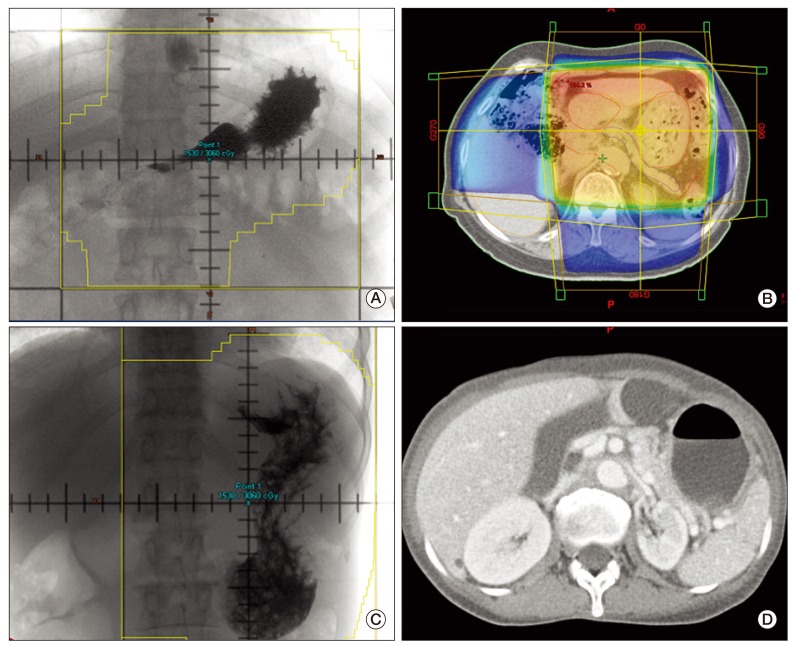1. Park HJ, Park EH, Jung KW, Kong HJ, Won YJ, Lee JY, et al. Statistics of hematologic malignancies in Korea: incidence, prevalence and survival rates from 1999 to 2008. Korean J Hematol. 2012; 47:28–38. PMID:
22479275.

2. Kim JM, Ko YH, Lee SS, Huh J, Kang CS, Kim CW, et al. WHO classification of malignant lymphomas in Korea: report of the third nationwide study. Korean J Pathol. 2011; 45:254–260.

3. Hahn JS, Kim YS, Lee YC, Yang WI, Lee SY, Suh CO. Eleven-year experience of low grade lymphoma in Korea (based on REAL classification). Yonsei Med J. 2003; 44:757–770. PMID:
14584090.

4. Marshall BJ, Windsor HM. The relation of Helicobacter pylori to gastric adenocarcinoma and lymphoma: pathophysiology, epidemiology, screening, clinical presentation, treatment, and prevention. Med Clin North Am. 2005; 89:313–344. PMID:
15656929.

5. Nakamura S, Sugiyama T, Matsumoto T, Iijima K, Ono S, Tajika M, et al. Long-term clinical outcome of gastric MALT lymphoma after eradication of Helicobacter pylori: a multicentre cohort follow-up study of 420 patients in Japan. Gut. 2012; 61:507–513. PMID:
21890816.
6. Ahmad A, Govil Y, Frank BB. Gastric mucosa-associated lymphoid tissue lymphoma. Am J Gastroenterol. 2003; 98:975–986. PMID:
12809817.

7. Zullo A, Hassan C, Cristofari F, Andriani A, De Francesco V, Ierardi E, et al. Effects of Helicobacter pylori eradication on early stage gastric mucosa-associated lymphoid tissue lymphoma. Clin Gastroenterol Hepatol. 2010; 8:105–110. PMID:
19631287.

8. Park HC, Park W, Hahn JS, Kim CB, Lee YC, Noh JK, et al. Low grade MALT lymphoma of the stomach: treatment outcome with radiotherapy alone. Yonsei Med J. 2002; 43:601–606. PMID:
12402372.

9. Schechter NR, Portlock CS, Yahalom J. Treatment of mucosa-associated lymphoid tissue lymphoma of the stomach with radiation alone. J Clin Oncol. 1998; 16:1916–1921. PMID:
9586910.

10. Vrieling C, de Jong D, Boot H, de Boer JP, Wegman F, Aleman BM. Long-term results of stomach-conserving therapy in gastric MALT lymphoma. Radiother Oncol. 2008; 87:405–411. PMID:
18343513.

11. Okada H, Takemoto M, Kawahara Y, Nasu J, Takenaka R, Kawano S, et al. A prospective analysis of efficacy and long-term outcome of radiation therapy for gastric mucosa-associated lymphoid tissue lymphoma. Digestion. 2012; 86:179–186. PMID:
22907329.

12. Yoshino T, Akagi T. Gastric low-grade mucosa-associated lymphoid tissue lymphomas: their histogenesis and high-grade transformation. Pathol Int. 1998; 48:323–331. PMID:
9704338.

13. Du M, Peng H, Singh N, Isaacson PG, Pan L. The accumulation of p53 abnormalities is associated with progression of mucosa-associated lymphoid tissue lymphoma. Blood. 1995; 86:4587–4593. PMID:
8541549.

14. Omonishi K, Yoshino T, Sakuma I, Kobayashi K, Moriyama M, Akagi T. bcl-6 protein is identified in high-grade but not low-grade mucosa-associated lymphoid tissue lymphomas of the stomach. Mod Pathol. 1998; 11:181–185. PMID:
9504689.
15. Sagaert X, de Paepe P, Libbrecht L, Vanhentenrijk V, Verhoef G, Thomas J, et al. Forkhead box protein P1 expression in mucosa-associated lymphoid tissue lymphomas predicts poor prognosis and transformation to diffuse large B-cell lymphoma. J Clin Oncol. 2006; 24:2490–2497. PMID:
16636337.

16. Nguyen LT, Uchida T, Murakami K, Fujioka T, Moriyama M. Helicobacter pylori virulence and the diversity of gastric cancer in Asia. J Med Microbiol. 2008; 57(Pt 12):1445–1453. PMID:
19018013.

17. The EUROGAST Study Group. An international association between Helicobacter pylori infection and gastric cancer. Lancet. 1993; 341:1359–1362. PMID:
8098787.
18. Hasegawa N, Kato K, Yamada K, Morita K, Kuroiwa M, Ito H, et al. Early-stage gastric adenocarcinoma: revealed after anti-Helicobacter pylori therapy of MALT lymphoma. Gastrointest Endosc. 2001; 53:495. PMID:
11275894.
19. Seo DB, Kwon KS, Park HS, Lee DH, Kim HG, Shin YW, et al. Metachronous gastric MALT lymphoma and early gastric cancer: a case report. Korean J Gastroenterol. 2007; 49:245–250. PMID:
17464170.
20. Zucca E, Pinotti G, Roggero E, Comi MA, Pascarella A, Capella C, et al. High incidence of other neoplasms in patients with low-grade gastric MALT lymphoma. Ann Oncol. 1995; 6:726–728. PMID:
8664197.

21. Montalban C, Castrillo JM, Lopez-Abente G, Abraira V, Serrano M, Bellas C, et al. Other cancers in patients with gastric MALT lymphoma. Leuk Lymphoma. 1999; 33:161–168. PMID:
10194134.
22. Armitage JO, Carbone PP, Connors JM, Levine A, Bennett JM, Kroll S. Treatment-related myelodysplasia and acute leukemia in non-Hodgkin's lymphoma patients. J Clin Oncol. 2003; 21:897–906. PMID:
12610191.

23. Harris NL, Jaffe ES, Diebold J, Flandrin G, Muller-Hermelink HK, Vardiman J, et al. The World Health Organization classification of hematological malignancies report of the Clinical Advisory Committee Meeting, Airlie House, Virginia, November 1997. Mod Pathol. 2000; 13:193–207. PMID:
10697278.

24. Chen LT, Lin JT, Tai JJ, Chen GH, Yeh HZ, Yang SS, et al. Long-term results of anti-Helicobacter pylori therapy in early-stage gastric high-grade transformed MALT lymphoma. J Natl Cancer Inst. 2005; 97:1345–1353. PMID:
16174856.
25. National Comprehensive Cancer Network. NCCN clinical practice guidelines on oncology: Non-Hodgkin's Lymphomas, version 3.2012 [Internet]. Fort Washington: National Comprehensive Cancer Network;c2012. cited 2012 Oct 20. Available from:
http://www.nccn.org/professionals/physician_gls/pdf/nhl.pdf
.





 PDF
PDF Citation
Citation Print
Print



 XML Download
XML Download